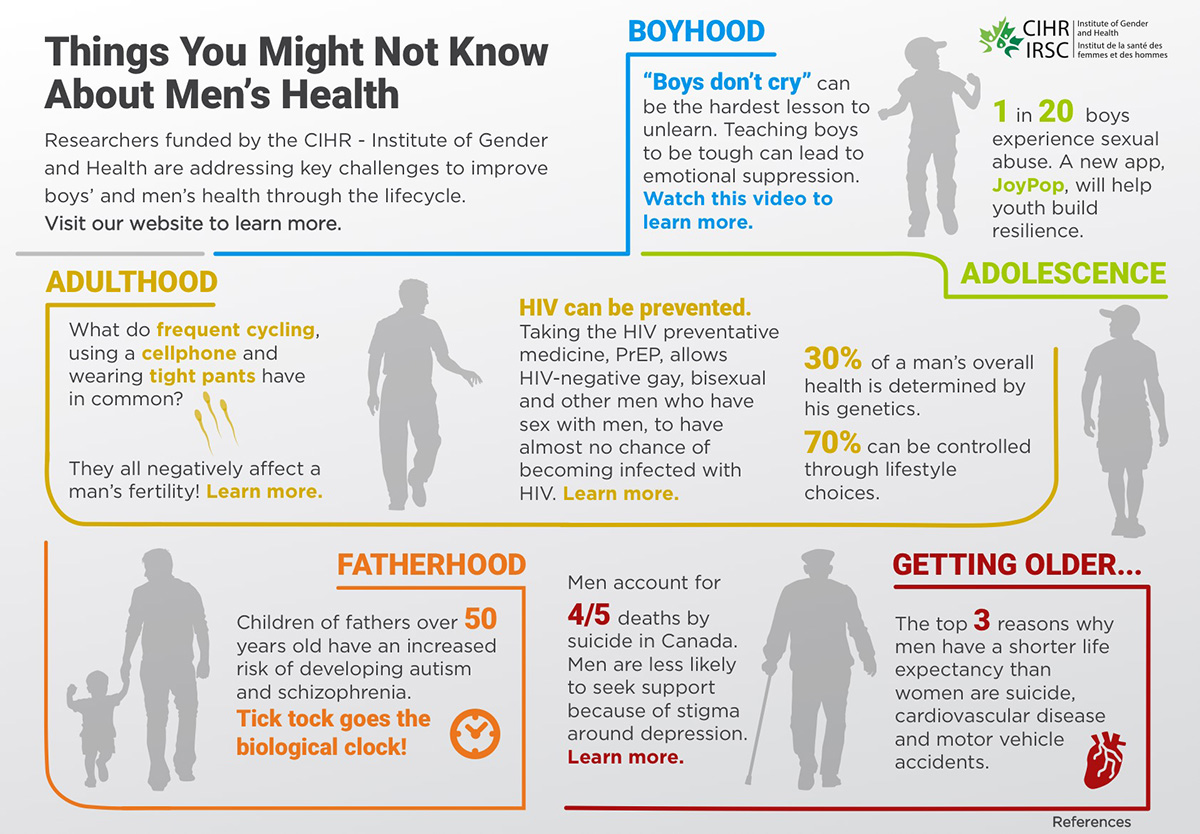Boys’ and young men’s health is on the global research agenda with a partnership between Dr. Christine Wekerle, Associate Professor, Pediatrics at McMaster University and Dr. Mark Kavenagh, Head of Research and Policy, ECPAT International to foster youth resilience in challenging contexts
Adolescence is a time of joy, hope, optimism and a new beginning. Developmentally-appropriate health risk-taking helps to refine an emerging identity. Health-impairing behaviours, such as failure to use protection, getting into fights, driving while intoxicated, put youth in need of protective social safety nets. Current research points to the serious challenges with which boys and young men contend. We intend to be protective of youth – adolescents are protected under the Convention on the Rights of the Child, as the United Nations defines youth as those between the ages of 10 and 19. Sixteen per cent of the global population is youth – but are we letting boys down?
Statistica Research reports that over 40% of U.S. households own one or more firearms. Male murders and male suicides are lethal so often because of their means – firearms. As more females turn to using firearms, the ratio of male to female suicides has been decreasing (Ruch, Sheftall, Schlagbaum, Rausch, & Campo, 2019). If being alive is the first step in youth resilience, we have to seriously look into the youths’ worlds. The Canadian Institutes of Health Research (CIHR) funded a series of new teams on boys’ and men’s health to tackle important, and sometimes uncomfortable, male health topics.
In Canada, conservatively, one in 20 boys experience child sexual abuse or CSA. Child sexual violence victimisation (sexual abuse and exploitation or CSE) among boys is a strong predictor not only of suicide and self-harm, but also of the need for mental health services, including hospitalisation, and support for violence in dating relationships. Stigma stops males from reaching out when there is a social pressure to fit in, to show strength and grit, when sensitivity is more like a super-power.
This video shows us that “stigma is on us (to solve)” and we have to open up (see youth-made video). The lifespan of findings are evident in the CIHR Institute of Gender and Health’s infographic below. We are finding newer and safer ways to talk, with resilience apps, like JoyPopTM (see JoyPop video). Policymakers have stepped up to listen and ask the critical questions: “Are you okay?” and “What happened to you?”
CIHRTeamSV’s partner, ECPAT International argues the pressing need for a global analysis of sexual victimisation among boys and male youth. In our collaboration, we note that the aim is not to minimise the importance of understanding and eliminating sexual violence among girls, but to acknowledge that vulnerable sub-groups of boys exist in community (i.e., street-connected boys, refugees, sexual minorities), service systems (i.e., justice, child welfare, humanitarian aid) and industry (i.e., tourism, child labour). Youth are identifying sexual violence as one of their top priorities. The alarm bells sound even more strongly when online CSE images show that where males are present, they were more likely to be prepubescent than pubescent, and involved in more severe assaultive acts.
Males are less likely to disclose, potentially delaying receiving help to decades later or never. Three key calls for research to close the gap between occurrence and help are: (1) a global analysis of prevalence to understand the true scope of the problem; (2) tackling the role of gender bias to victim identification and recognition of their victimisation and seeking support, and (3) developing services and models that are sensitive to boy victims and recognising their need to be supported at critical developmental junctures. Trust and relating are core casualties in violence. A trauma-informed approach and early intervention may transform resistance to resilience, and support males towards their fuller and freer expression of self-compassion and kindness to others.
References
Josenhans, V., Kavenagh, M., Smith, S., & Wekerle, C. (2019). Gender, rights and responsibilities: The need for a global analysis of the sexual exploitation of boys. Child Abuse & Neglect. In press, corrected proof.
Ruch, D. A., Sheftall, A. H., Schlagbaum, P., Rausch, J., & Campo, J. V. (2019). Trends in suicide among youth aged 10 to 19 years in the United States, 1975 to 2016. JAMA Network Open, 2(5), e193886. doi:10.1001/jamanetworkopen.2019.3886.












